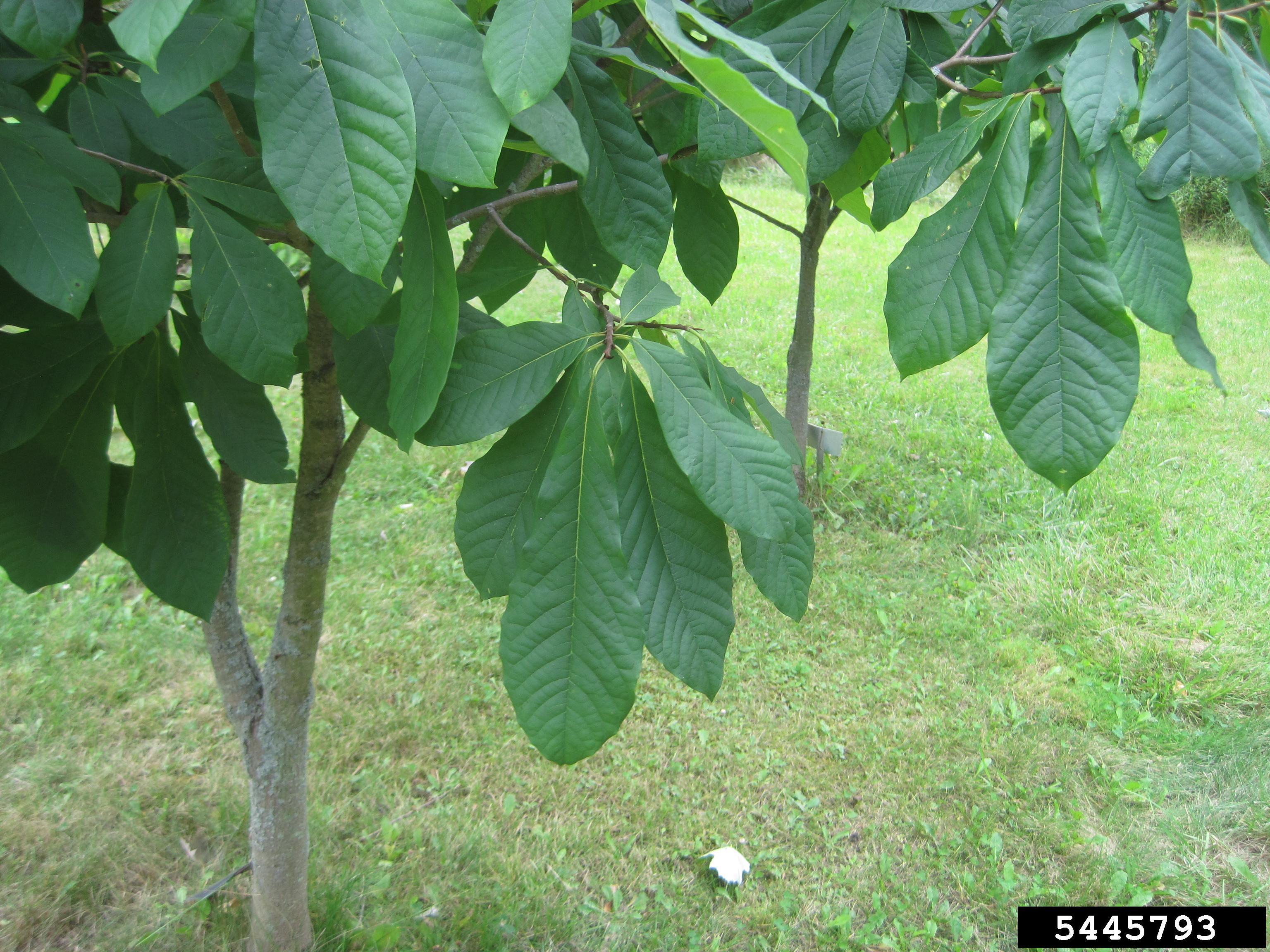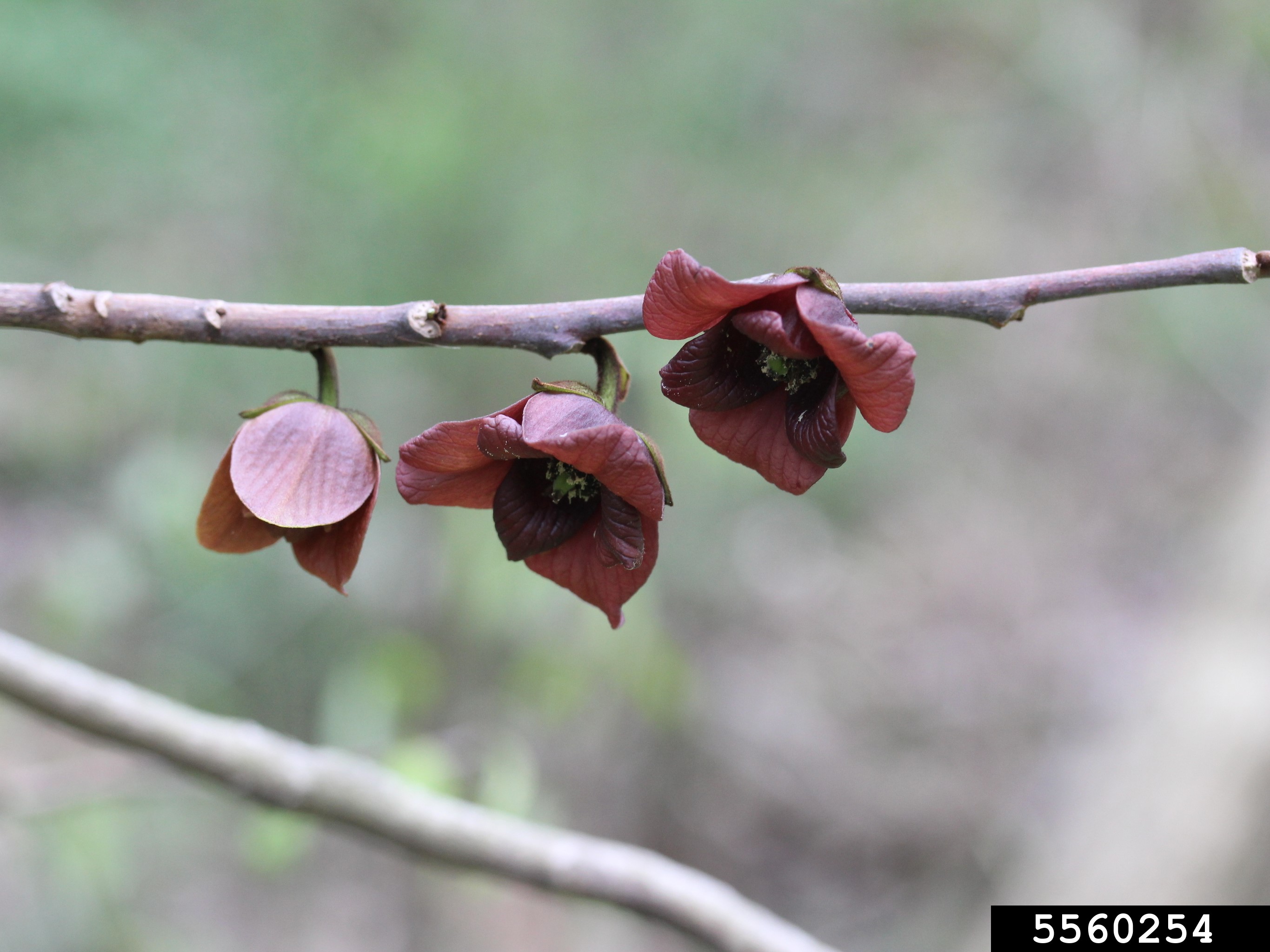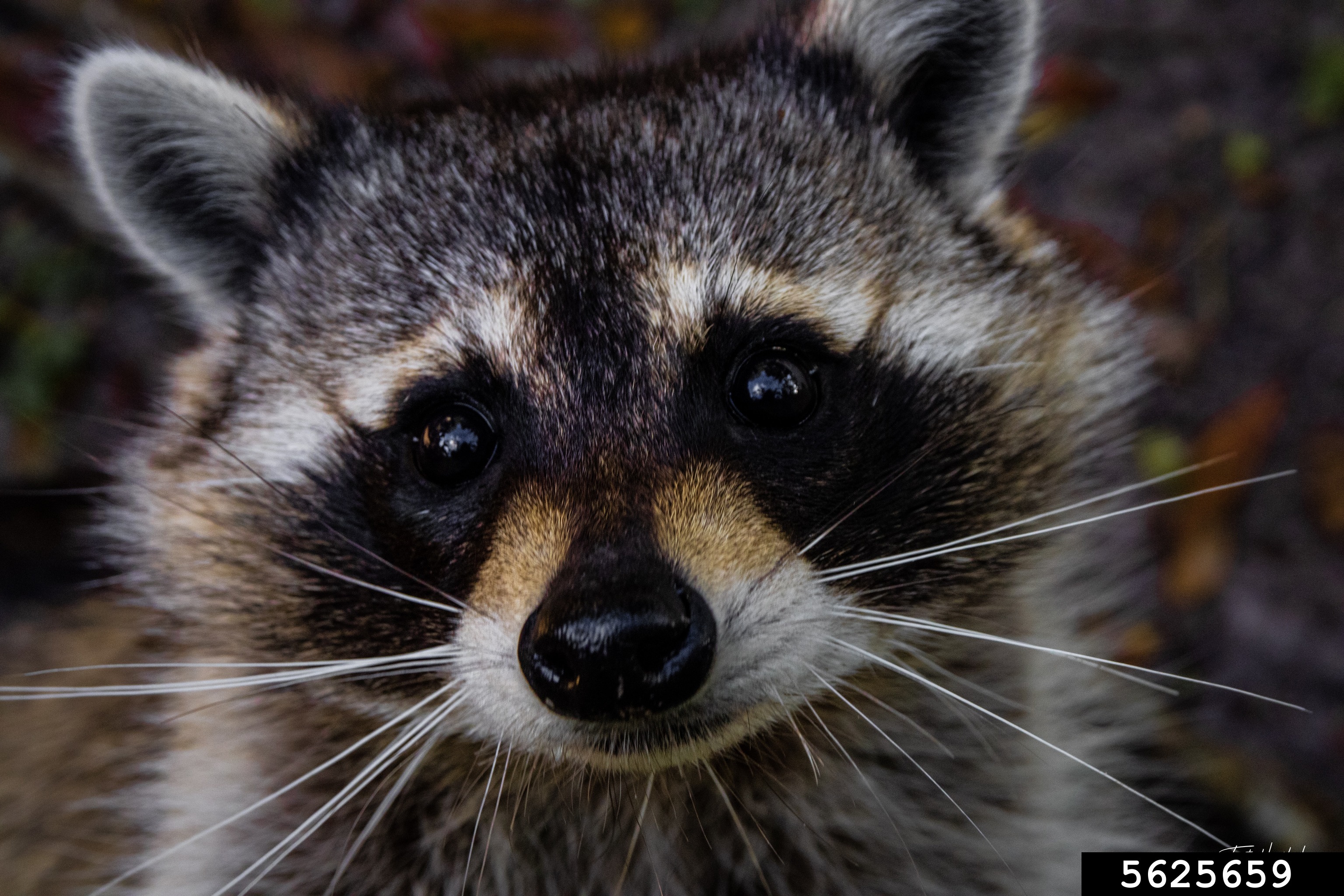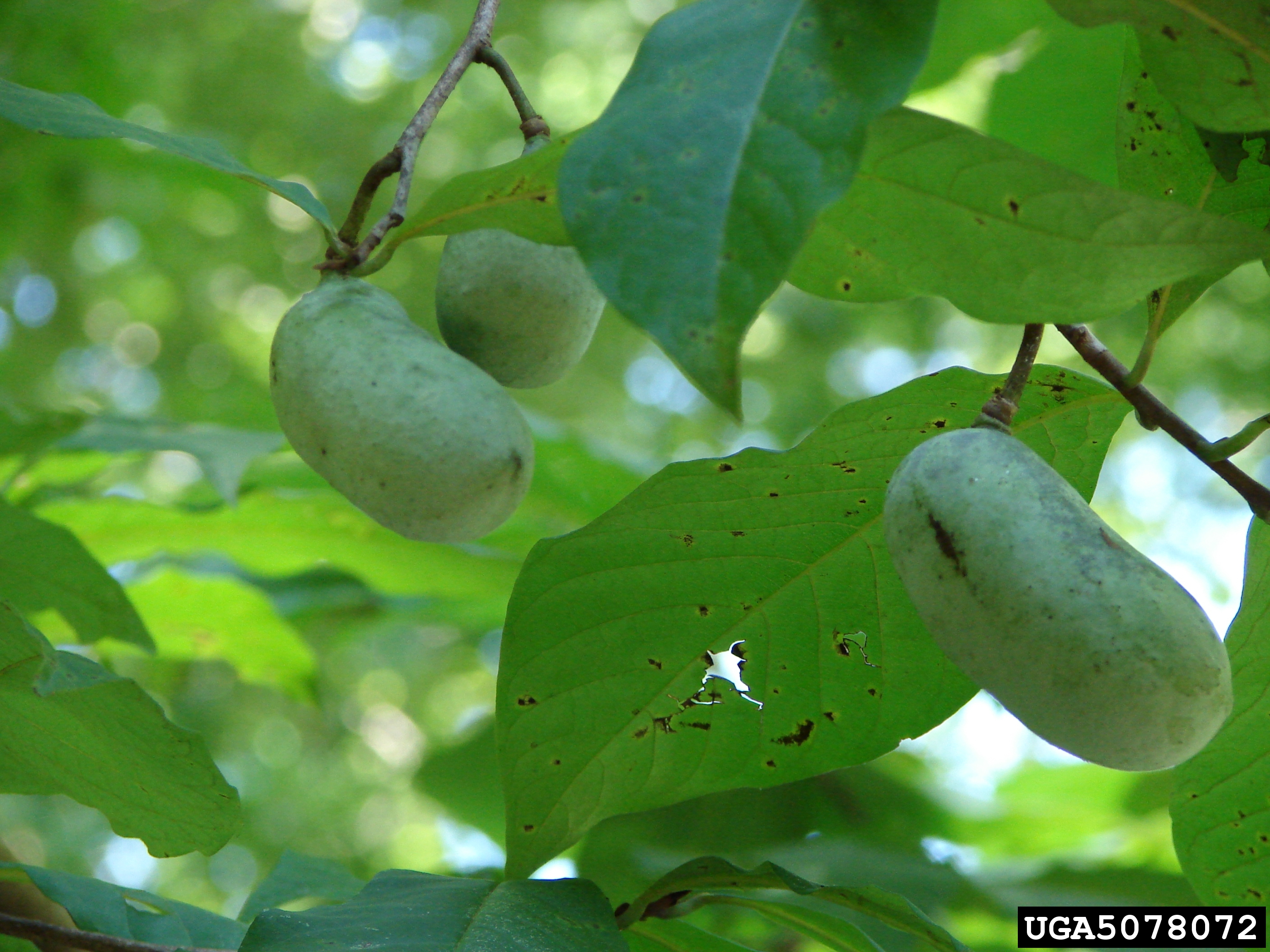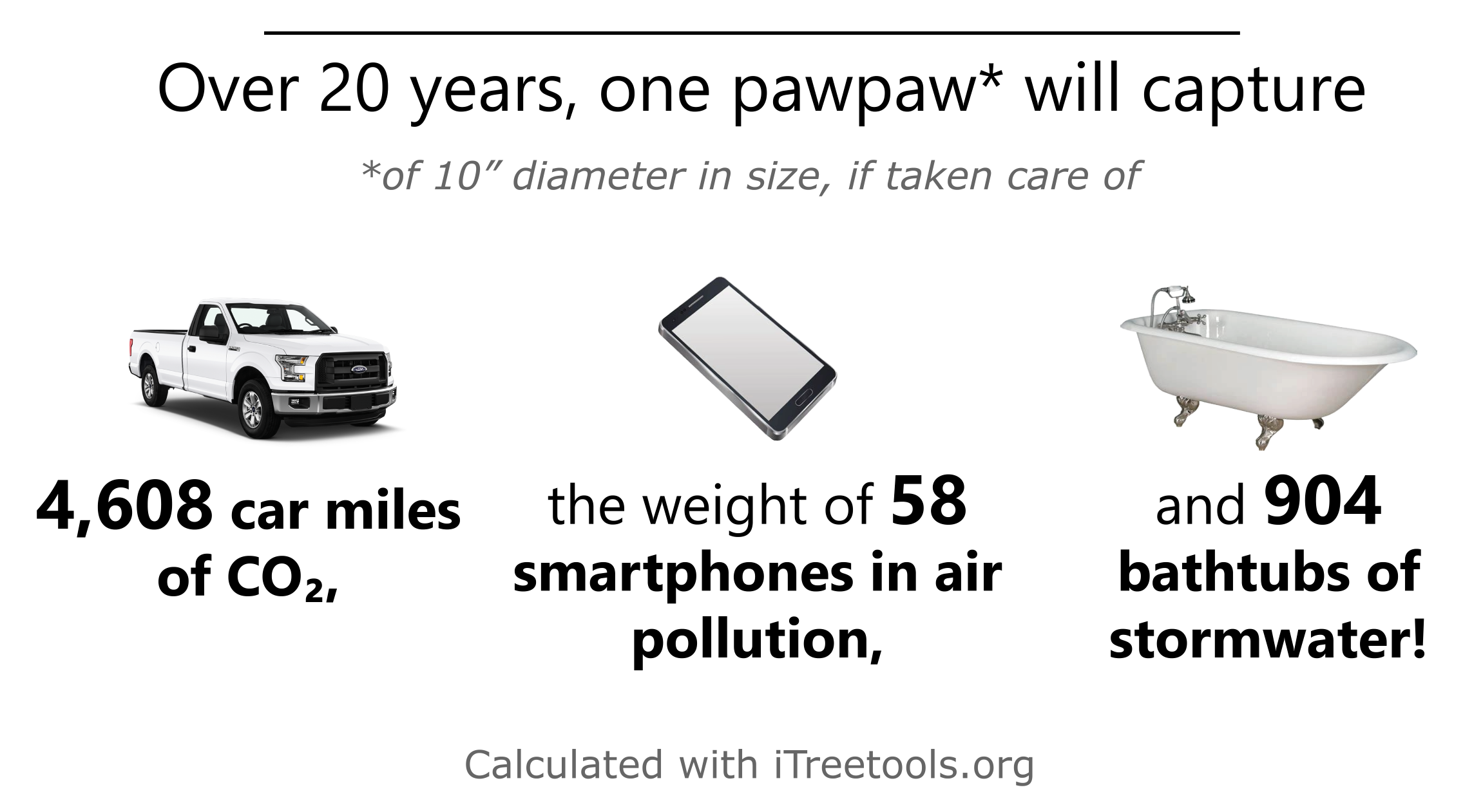Tree Highlight: Pawpaw
Pawpaw
Asimina triloba (Family: Annonaceae)
The Kentucky coffetree has large leaves measuring up to 12 inches
The basics
Pawpaw (Asimina triloba) is the only tree of its kind in this part of North America because it belongs to a family of plants that mostly live in tropical regions. The fruit looks like a small green potato but tastes like a mix of bananas, mangoes, vanilla, and a little bit of citrus. In the forest, pawpaw grows in groups of trees that are all connected to the same root system.
Did you know?
- Pawpaw flowers are dark maroon and look like little stars. They have a unique smell that attracts flies and beetles, which help pollinate the tree.
- Pawpaw leaves contain natural insect-repelling chemicals.
- Pawpaws were enjoyed by Native Americans and were grown by Thomas Jefferson at his home in Monticello.
- The pawpaw tree’s scientific name is Asimina triloba. Asimina comes from the Algonquin words “assimin.” The word combines rassi meaning “divided lengthwise into equal parts” and “min” meaning seed, fruit, nut, etc., referring to the symmetrical fruit produced by the pawpaw. The species name triloba is Latin for “three-lobed” referring to the three-lobed flowers produced by the pawpaw.
Pawpaw flowers appear before the leaves and attract insects
Racoons are one of the many animals that eat pawpaw fruit
Wildlife
- Many birds, including songbirds and wild turkeys, snack on pawpaw fruit.
- Lots of animals enjoy pawpaw, like opossums, raccoons, squirrels, foxes, coyotes, bears, and white-tailed deer. It’s a wildlife feast!
- Pawpaws are host plants for the caterpillars of the zebra swallowtail butterfly and the pawpaw sphinx moth.
Uses
- Pawpaw fruits can be eaten fresh or made into pawpaw ice cream, smoothies, and pies.
- Native Americans and early settlers used different parts of the pawpaw tree to make medicines. They believed it helped with ailments like digestive issues and skin problems.
- Pawpaw trees are also planted in gardens and orchards. They are easy to grow and can add a tropical touch to your backyard.
The pawpaw fruits can be eaten fresh or used for many recipes
Benefits
- Over a 20-year period, a healthy pawpaw with a diameter of 10 inches will offset 4,608 car miles worth of CO2, absorb enough stormwater to fill 904 bathtubs, and remove an amount of pollution from the air - in gaseous and particulate form - equivalent in weight to 58 smartphones! Learn more at: https://mytree.itreetools.org/
Pawpaw Tree of the Week video
By University of Kentucky Forestry and Natural Resources Extension.
Click to watchContact us: ufi@uky.edu
Images sourced from forestyimages.org
